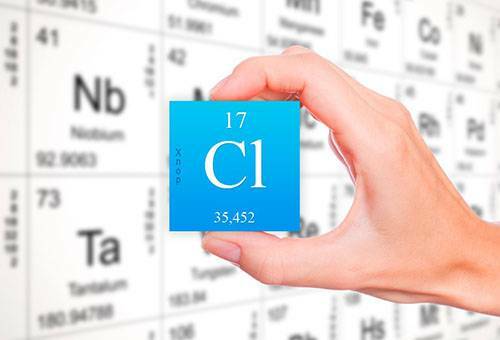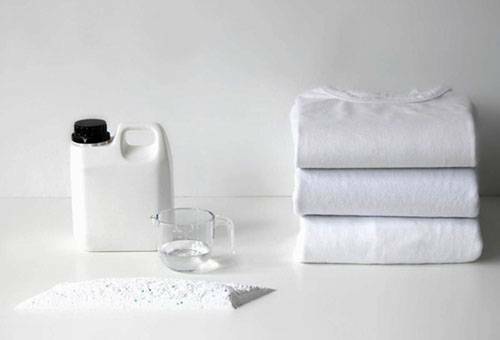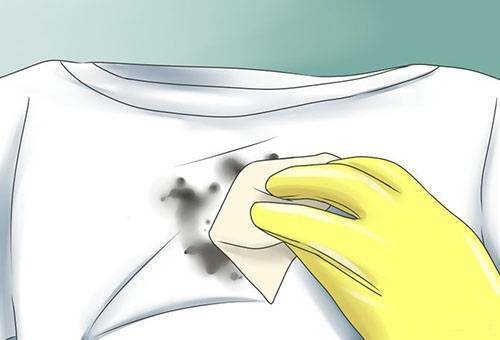Contents:
- Can not bleach synthetics?
- Returning white color to grayed-out things
- How to remove yellowness?
- Removing stains
- Chemicals for bleaching synthetics and removing stains
- How to avoid the appearance of stains or yellowness?
If you need to whiten white clothes made of synthetic fibers or lingerie with lace inserts at home, you need to determine what means to do this. Their choice, in the first place, depends on which defect you have to cope with:
- remove stains;
- refresh the graying things;
- remove yellowness.
It is possible to bleach the synthetics, including removing stains, with the help of special factory tools - bleach and stain remover, and using "grandmother's secrets".

How can I bleach synthetics?
Sometimes in publications there are tips for whitening white things that are absolutely not suitable for synthetic fabrics.
Synthetic should not be subjected to the following manipulations:
- should be boiled and washed at high temperature;
- soak or wash with products containing chlorine;
- dry under direct sunlight.
- squeeze after bleaching.
Chlorinated bleaches act on synthetics unpredictably and in most cases lead to yellowing of the tissue. So does the drying in the sun. But digestion can lead to deformation or complete damage to things.

Returning white color to grayed things
There is a chance to whiten the gray synthetics with the help of ordinary salt. For this, the things are soaked in warm water with the addition of salt - 600 g is mixed in 10 liters of water, after which they must be thoroughly rinsed and washed with powder.
Another way: with the use of soda and ammonia.10 tablespoons of soda and 2 tablespoons of ammonia( 3%) are bred in 10 liters of warm water, clothes soak for several hours( from 3 or more).After soaking, you need to do the washing with the powder to wash the softened particles that give the fabric a greyish shade.
Advice
If the fabric has become gray from long-term use or frequent negligent laundering, it is unlikely to bleach it. In addition, on the surface of such clothing are formed pellets, which also give an untidy appearance, so its "resuscitation" still does not give the expected effect.

How to remove yellowness?
White things can turn yellow under the influence of many factors. Sometimes it is quite easy to restore the original whiteness at home, sometimes it is necessary to make efforts, and there are cases when it is not possible to restore the original color, for example, when synthetic fibers have entered into a chemical reaction with chlorine.
Causes of yellowing:
- organic matter particles;
- traces of perfume or cologne;
- washing in water with a high content of magnesium salts;
- use of untreated water( with rust);
- is not thoroughly rinsed after washing( including if the filter is clogged by the machine);
- washing of white things with powder for colored linen;
- mold.
Organic particles are traces of our body on clothes. This is not only sweat, but also dead epidermis. If a white thing is to be dressed at least once and not washed, and then put in a closet for a long period of storage - it is likely to turn yellow. The same happens if things are poorly washed after use. To bleach such yellowness it is possible by means of usual economic soap.
- Soak clothes in cold or slightly tepid water for several hours.
- Wipe with soap and soap( 72%) to give a thick, thick foam.
- Pour hot water and soak for about an hour.
- Thoroughly stretch and rinse.
- Wipe again with soap and repeat washing.
Board
Poorly washed or rinsed things are washed more difficult, perhaps, the procedure will have to be repeated several times.
The fine yellow spots that appear after a short time after washing may well be moldy. After all, the mold on things can be yellow and whitish, not just black. To cope with such spots, you can use ammonia. For these purposes, suitable as a technical aqueous solution of ammonia( 25%), and known to all ammonia - a 10-percent solution. It is used as follows:
- in 10 liters of warm water dissolve 1 tablespoon of 25 percent solution or 4 tablespoons of three percent - ammonia;
- things soaked for several hours, and then erased in the usual way;
- at washing it is possible to add besides soap or a powder also ammonia, but already in smaller proportion.
The same method of bleaching is used if the water contains a high content of magnesium salts.

Advice
Ammonium alcohol can be added during washing for prevention. Then the clothes do not show yellowness.
If yellowness appeared from washing in rust-free water, in addition to ammonia, add hydrogen peroxide: 200 ml per 10 liters of water. There are two more recipes that can help cope with this problem:
- soaking in sulfur-containing solutions;
- application of peroxide bleaching agents.
A sulfur-containing solution can be prepared from ordinary mustard( powder).100 g of mustard is thoroughly mixed in a small amount of water, and then diluted in 10 liters. Things are soaked, and then washed in the usual way. Water for soaking should be as hot as possible, so for clothes that can be washed to 50 ° C, this method is not suitable. More effective is the use of peroxide bleaches.
If possible, you can bleach clothes with sodium hydrosulfite - 2 tablespoons per 10 liters of water. This drug is used to soften water in boilers, so sometimes there is an economy of residents of private homes. If it is not suitable, 30% hydrogen peroxide( perhydrol or hydroperite) or usual 3% peroxide will be suitable: 30 ml of hydrogen peroxide or 2 tablets of hydroperite are added to 10 l of water with a temperature of 30 ° C.To increase the reaction, you can add a little soda ash. Synthetics are soaked in the prepared solution for 20-30 minutes. Soaking is done in plastic containers.

Removing stains
For any synthetics, except for acetate fabrics, the following mixture is used to remove stains: 5 parts of alcohol, 5 parts of tartaric acid, 2 parts of citric acid. As a result of mixing, a gruel must be obtained. It is applied to the stain and rubbed for 5-10 minutes before washing.
A few more recommendations for removing stains from light synthetics.
- Sweat stains are washed if 2 tablets of aspirin are mashed and dissolved in 100 ml of cold water, and the resulting solution is applied to the contaminated areas 2-3 hours before washing.
- Greasy stains are removed with the help of salt or chalk. The stain is rubbed with chalk powder or salt, and after a few hours removed with a brush. This method is suitable only for fresh spots.
- Ink stains are removed by soaking and washing the area with a stain in fresh milk or curdled milk.
- The resulting rust stain can be tried with a lemon. The lemon wrapped in gauze is applied to the spot and pressed with an iron.

Chemicals for bleaching synthetics and removing stains
Chlorinated bleaching agents can not be used for synthetics. However, to date, there are effective products available that can bleach the fabric well and do not damage synthetic fibers.
Here are some tools that have proved their effectiveness and are suitable for synthetics.
- Spray Amway Pre Wash .It is applied to a cloth and wiped with a sponge.
- Soap "Antipyatin" .Things are soaped for 10-15 minutes before washing. To enhance the effect, you can add soap to the powder.
- Powder Amway SA8 .Suitable only for fabrics that can be washed in water with a temperature of more than 30 ºC.It is added when soaking.

How to avoid the appearance of spots or yellowness?
How to properly wash and store white synthetic items so that they do not "age"?There are a few secrets.
- Before washing, sort by separating white things.
- Synthetic, wool and cotton also can not be washed at the same time, because they have different temperature modes of washing.
- The laundry should be soaked in cold water before washing for at least an hour.
- Cooking water for washing: for white things, use standing or filtered water, and if the water is hard, soften it with soda.
- Do not keep white things ironed.
- Do not use optical whiteners often: they can be used no more than 3 times.
- Do not put wet clothes in the closet.
- Make sure that the drain filter is not clogged in the machine.
If you adhere to these recommendations, you can prevent the "unauthorized" color change of light synthetic things. In the event that such a trouble has occurred, and when you take out your favorite underwear or blouse from the closet, you find spots, a yellowish or grayish tint, the tips given above will help whiten things at home and enjoy the freshness of your clothes.



